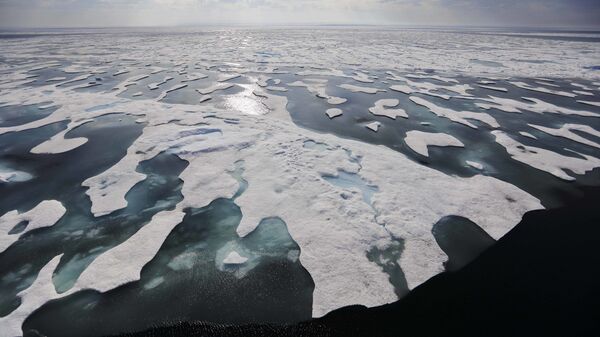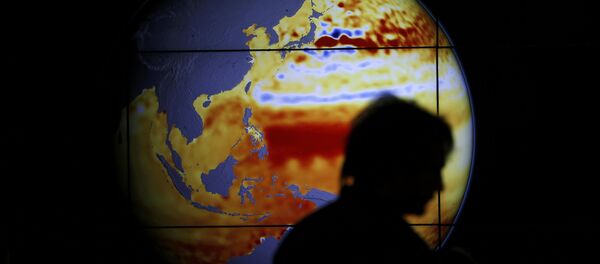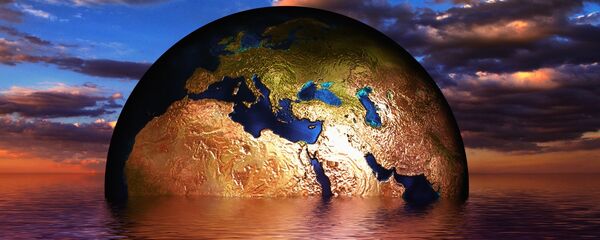Sputnik has discussed climate change with Dr Sigrid Lind, from the Institute of Marine Research and the Bjerknes Centre for Climate Research in Norway.
Sputnik: What has brought about the climate shift?
Dr Sigrid Lind: The Arctic is shrinking, the Arctic domain is shrinking in response to global warming. The northern Barents Sea has had an Arctic type of climate over the last 12,000 years, but it is now changing towards an Atlantic type of climate, and that's alarming.
Sputnik: Can you tell us the primary differences between an Atlantic type of climate and an Arctic type of climate? I know that an Arctic climate would have a layer of freshwater sea ice, and can you tell us perhaps how important that is?
Sputnik: That's actually quite rapid, isn't it?
Dr Sigrid Lind: Yes, it's an example of a rapid climate shift that previously was known to have occurred during the last Ice Age that ended 12,000 years ago and lasted about 100,000 years before that, and during that time period there were warm climate periods and cold and it was shifting back-and-forth.
There was much bigger variability in global temperatures than there is now and we know that the Northern Sea was sea ice covered with an Arctic type of climate during the cold period and it rapidly shifted to an Atlantic type of climate without that freshwater cap and without sea ice, only Atlantic water. And it happened really fast, from paleoclimate studies, we can see that it happened within decades.
READ MORE: US Supreme Court Rejects Exxon's Appeal in Climate Change Records Fight
Sputnik: Now what's being said now is that the Barents Sea is at a tipping point. Is it too late in the game to tip it back in the right direction?
Dr Sigrid Lind: Well, if you would have large sea ice inflows for several years, you could probably rebuild the stratification that it used to have. There is still stratification there, but when the stratification breaks down and Atlantic water occupies the whole water column, then it's probably irreversible in the sense that you will need large sea ice inflows over several consecutive years to rebuild the fresh water reservoir once it's gone.
Sputnik: There's something called a feedback loop, which means the more the layers mix, the warmer water and the saline, the colder freshwater, the warmer the surface gets and the more the waters mix…
Dr Sigrid Lind: Yes, it's actually the more saline the upper, fresher layer becomes the more they mix, because they become more equal in density; so the density difference between the upper fresher layer that we call the Arctic and the Atlantic layer below, that density is important and as the layers mix, the density difference decreases.
Sputnik: Can you tell us about some of the impacts in terms of the species that would be most under threat as a result of these changes?
Dr Sigrid Lind: Well, the whole region has an Arctic ecosystem; the species there are adapted to the to the cold, stratified and sea ice covered Arctic type of climate, and it's clear that they're already under pressure because species are coming in from the southern part of the Barents Sea into the northern region in summer now, that was shown in 2015. The Arctic species are likely outcompeted when they have these southern species coming in into their region and the Arctic species have already withdrawn towards the north and east.
READ MORE: Earth Awaits a Superhero to End Racism and Climate Change
Sputnik: This past year we've seen these horrible images of polar bears that are dying because they hunt primarily on the ice caps and when they melt, they can't effectively hunt. Is this part of this problem?
Dr Sigrid Lind: Yes, it's part of it; they are using sea ice and the sea ice cover is diminishing; that makes it harder for them. There's a lot of research ongoing on exactly how the polar bears are responding to this, but we know that also they probably have to find a new habitat and new sources for food — not only them, but also a lot of different sea species that are using sea ice, and other species that are connected to sea ice.
Views and opinions, expressed in the article are those of Dr Sigrid Lind and do not necessarily reflect those of Sputnik



